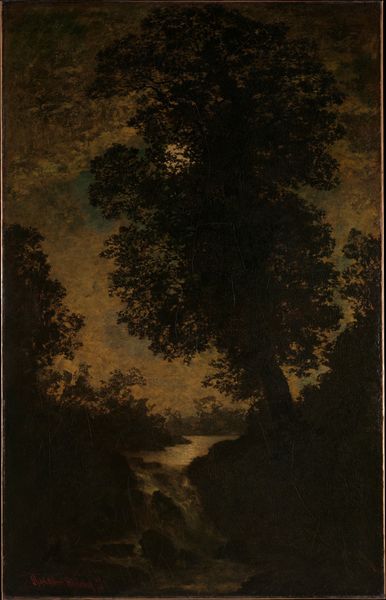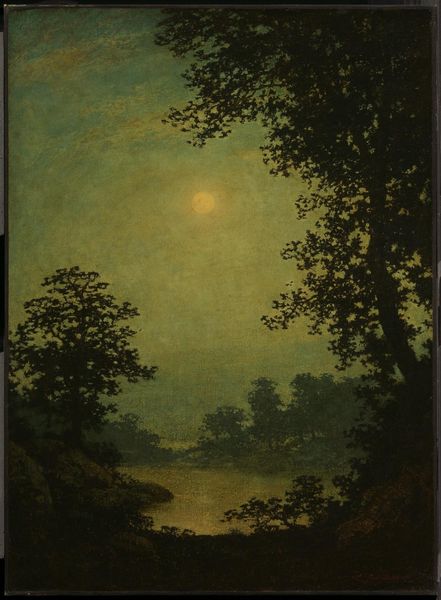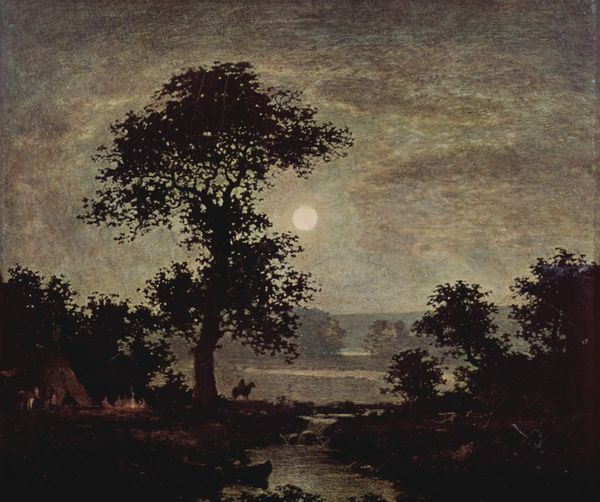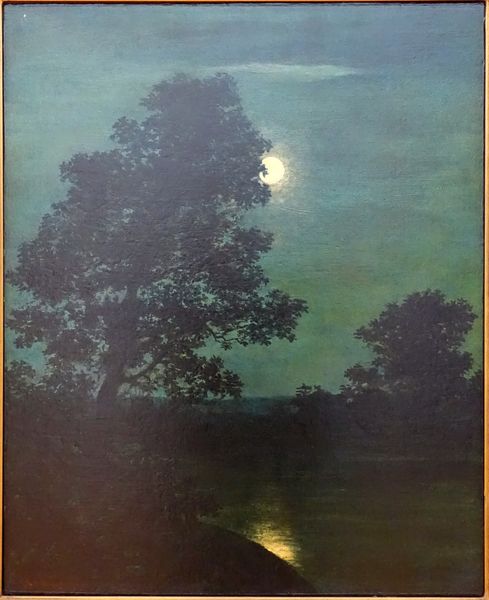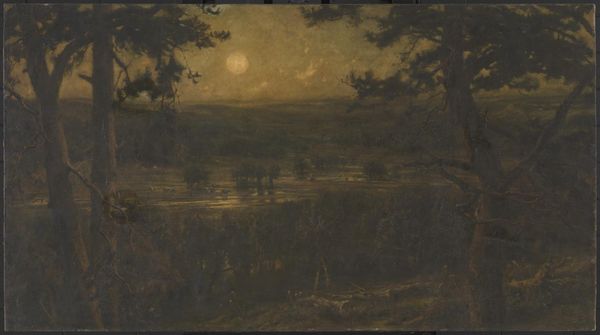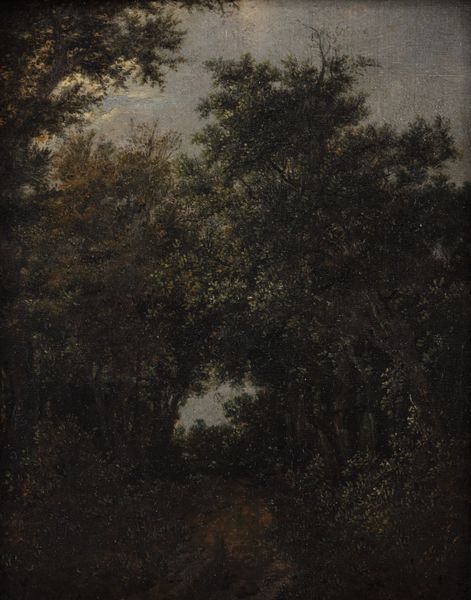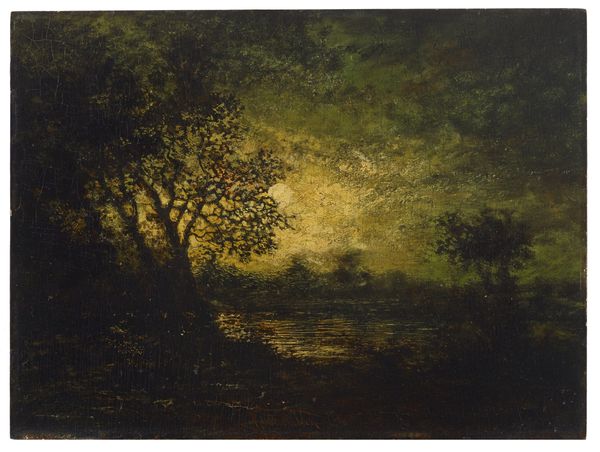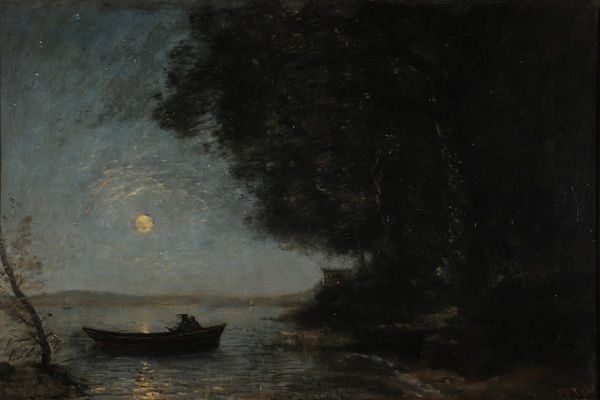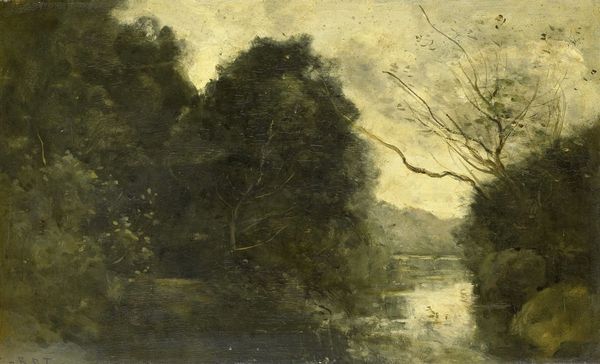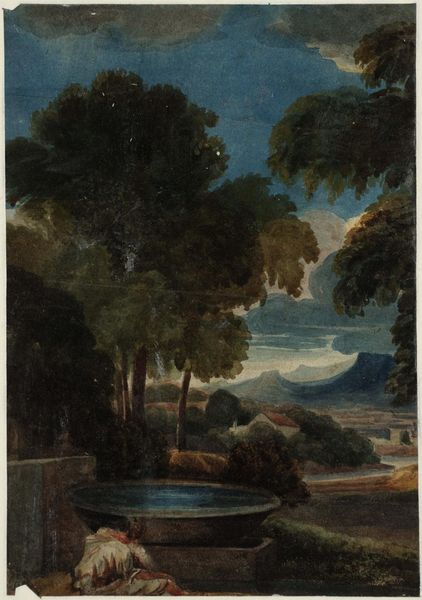
plein-air, oil-paint
#
tree
#
sky
#
impressionism
#
plein-air
#
oil-paint
#
landscape
#
oil painting
#
romanticism
#
nature
Copyright: Public domain
Curator: This is a painting entitled "Moonlight" by Ralph Blakelock. It's an oil on canvas, a landscape dominated by cool, deep greens and blacks. What catches your eye first? Editor: That pervasive, almost suffocating darkness, really. It’s romantic but melancholic. Like peering into a dream, or maybe a beautiful nightmare. The little moon offers some hope, of course. Curator: Absolutely. The moon as a symbol, a classic source of romantic inspiration. Beyond that, consider how the moon sits in the image as almost the subject of worship by the imposing trees in the foreground, but one gets the feeling of solitude also. Blakelock loved rendering moonlight, night scenes and twilight – that threshold between states, almost an inner world spilling out. Editor: Thresholds indeed. And what about the symbol of a tree, its imposing form blocking most of the light. This, of course, could also reference concepts related to knowledge and immortality that stem from long forgotten oral histories in every human culture across the globe. The use of light feels significant here; a pinpoint trying to illuminate an obscured, natural reality. Curator: You're right; nature, almost brutally observed. Yet softened. It's painted in a way that teeters on the edge of the fantastical – what the Pre-Raphaelites referred to as 'the soul landscape,' that is the place in our souls that is expressed by the images around us in our material world.. It also reminds me of that impulse, I think most landscape painters feel: how to render nature as emotional truth? Editor: Precisely! It isn't literal transcription. There's a palpable tension here. It’s the artistic spirit imbued into what would otherwise be an ordinary stand of trees in a nocturnal, almost pagan scene, which leads me to feel that I'm entering some long forgotten holy space or ancient tribal site. It gives off an odd aura of mystery, loss, longing… Curator: A really complex emotional register for a landscape. His impasto is very unique, very rough... it feels sculpted somehow, he built layer after layer. He loved experimenting. I suppose, one could say, it’s not as precise, not as polished as, say, a Bierstadt. It's something rougher and rawer to tap into emotions directly.. Editor: That's what elevates it. Blakelock creates an invitation to dive deeply within ourselves. I suppose his artistic decision to evoke the natural elements creates a portal that is forever captured in the viewers perception. The artist invites them to participate in some long-forgotten ceremony of time, loss, and personal evolution. The journey of life from point A to point B, a beautiful testament!
Comments
No comments
Be the first to comment and join the conversation on the ultimate creative platform.
